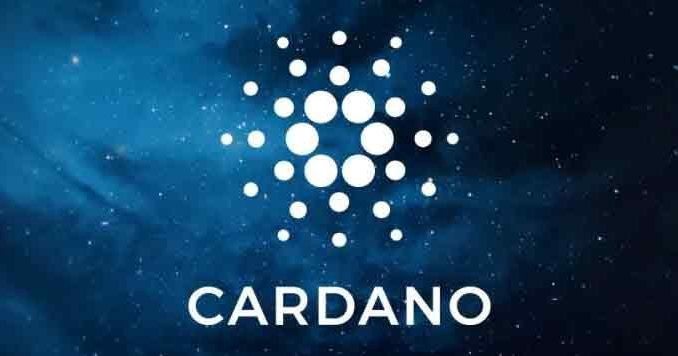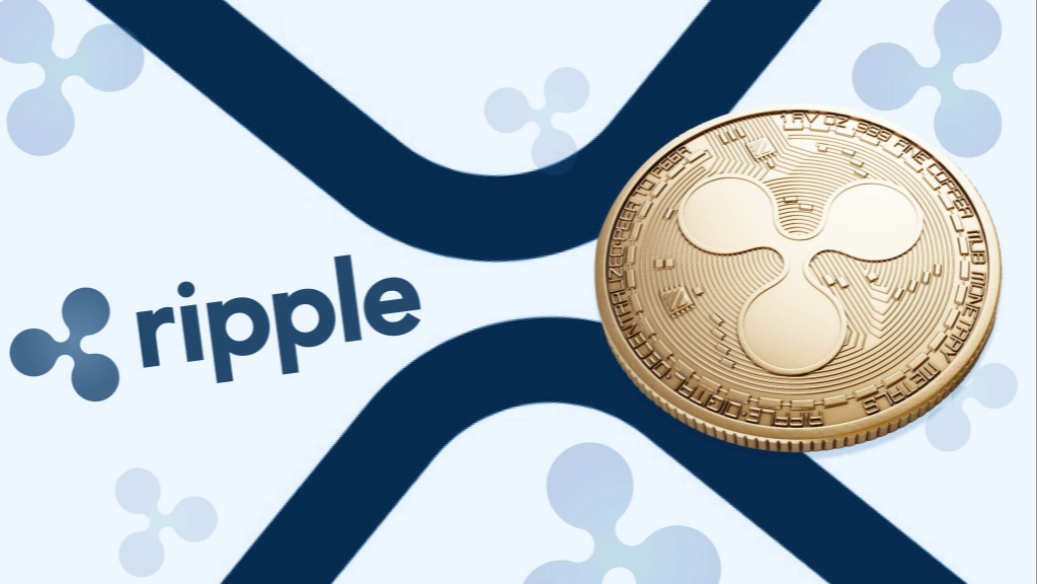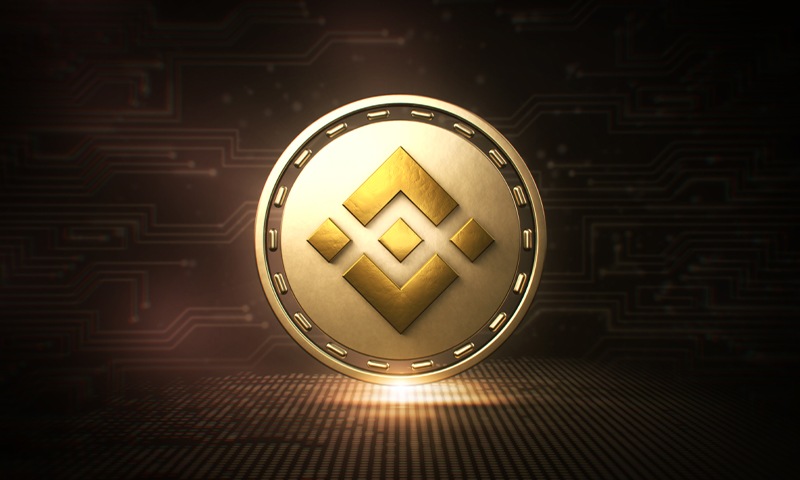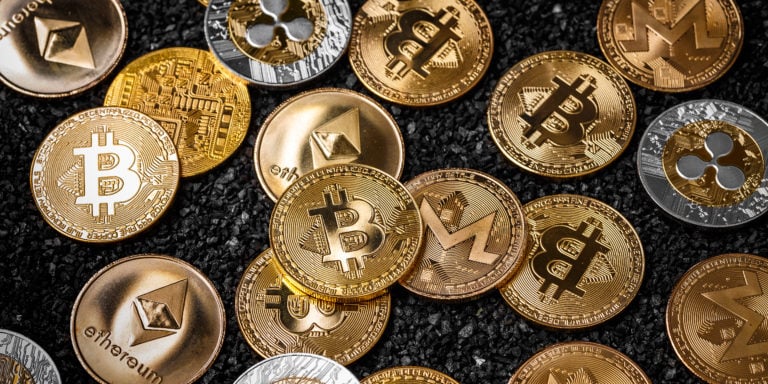This article was submitted by a Guest Contributor. If you would like to submit an essay, email [email protected]!
The opinions expressed in this publication are those of the Guest Author/Contributor. They do not purport to reflect the views or opinions of the Financial Horse Team.
In the previous article, we introduced Bitcoin and Ethereum, the two largest cryptocurrencies by market cap. This article dives deeper into the world of altcoins.
To recap, altcoins are any cryptocurrency that aren’t Bitcoin. These are much newer and smaller cryptocurrencies. They collectively add up to 40% of the market cap – the other 60% is taken up by Bitcoin.
As newer cryptocurrencies, they potentially have a higher upside. But being less established compared to Bitcoin, there’s also just as much downside risk.
Currently, there are around 9,000 cryptocurrencies. More are launched each day. And so, it’s impossible to provide a comprehensive summary. Instead, this article aims to give you a cross-section of the crypto space by discussing five cryptocurrencies:
- Cardano (ADA)
- Dai (DAI)
- Chainlink (LINK)
- Ripple (XRP)
- Binance Coin (BNB)
These cryptocurrencies are representative of the different types of altcoins, which include stablecoins, utility tokens and oracle networks. Each has a unique selling point, either by offering superior technology to existing blockchains or adding functionality to the system.

Cardano (ADA)
Market cap: US $38 billion
Category: Software platform
Value proposition: Global computer
Where to buy: Coinhako, Gemini
Check out Financial Horse’s Complete Guide – How to buy Bitcoin for Singapore Investors!
Key facts
Cardano calls itself the third generation of cryptocurrencies. According to its founder, Charles Hoskinson, the first generation, Bitcoin, is akin to the early days of the internet that only supported static websites.
The second generation, Ethereum, introduced smart contracts. Its effect on blockchain was like the internet after JavaScript, which enabled rich and interactive content we take the granted today.
However, Hoskinson believes that Ethereum has fundamental issues preventing it from becoming a “world computer” – a digital platform that is globally available. The most pressing is scalability.
One of the biggest criticisms of Ethereum now is the high transactional costs.This stemmed from the massive grown of DeFi applications on Ethereum. As more people used the network, demand surged, causing transaction costs to rise as well.
In Ethereum, this are called gas fees – paid to miners for executing transactions. Remember, Ether, the cryptocurrency, is fuel that powers the Ethereum network. And now, gas prices now are incredibly high, with some transactions costing around $100. This makes any microtransactions impossible.
Ethereum took a more experimental approach, launching first and fixing issues like scalability later. Cardano took a more slow-and-steady approach. It launched in 2017, two years after Ethereum. Even then, it is only gradually rolling out their full product.
Cardano started by surveying the entire crypto landscape to map out the limits of the technology. It took a uniquely academic and rigorous peer-reviewed approach.
Strengths
By letting the crypto space evolve, Cardano was able to identify problem, create best practices and a technologically-superior product. Their solution can be divided into three categories: scalability, interoperability and sustainability.
- Scalability – Like Ethereum 2.0, Cardano also uses a Proof-of-Stake protocol. This method of consensus retains the security of Proof-of-Work at a fraction of the energy cost. According to Cardano, this allows the currency to “securely, sustainably, and ethically scale, with up to four million times the energy efficiency of bitcoin.”
- Interoperability – One of Cardano’s main value propositions is its ability to operate with other blockchains and legacy systems. Instead of creating a walled garden closed off to other ecosystems, Cardano is designed to be globally interoperable. Like WiFi, it doesn’t matter where you are in the world, your phone can still connect to it.
- Sustainability – Cardano aims to improve on the existing governance models. Currently, disputes Blockchain projects have a poor governance model. Disputes about changes to the sytem have led to hardforks, leading Ethereum Classic and Bitcoin Cash. Cardano aims to introduce voting system to prevent similar messy splits.
Weaknesses
One drawback of taking a slower approach is that Ethreum’s lead in the DeFi space extends with each day. The vast majority of dApps are still being built on Ethereum. And so, Cardano’s success depends on whether its superior technology is enough to lure developers to its network. It would also need to overcome Ethereum’s first mover advantage and its growing lead in infrastructure, community, and funding.
Then there is the speed of its execution. Ethereum is not staying still. The high gas prices is an issue Ethereum hopes to address by shifting to the 2.0 network. A successful transition to Ethereum 2.0 will negate a significant part of Cardano’s value proposition.
Lastly, Cardano also needs to deal with a ton of competition. There are many “Ethereum Killers” in the market, such as Polkadot, Tezos and Algorand.

Dai (DAI)
Market cap: $2.9 billion
Category: Stablecoin
Value proposition: Decentralised digital fiat
Where to buy: Coinhako, Gemini
DAI belongs to a category of cryptocurrencies called stablecoins. So, before we can understand DAI’s value proposition, we have to understand stablecoins.
What are stablecoins?
Stablecoins are designed to minimise volatility by pegging its price to an asset, primarily USD. In other words, 1 DAI should always be equal to $1 USD. Stablecoins were created to address one of the biggest criticisms of cryptocurrencies – volatility.
Bitcoin and Ethereum still see wild price swings that make it too risky to be a store of value. With stablecoins, users can enjoy the convenience of a digital asset without its associated volatility.
For instance, if a merchant received payment in bitcoin, its price could fluctuate 10% by the time it is converted into fiat currency. Using Dai, a merchant that charges 30 DAI for a T-Shirt can be confident that they will have $30 USD whether they withdraw their DAI immediately or in two months.
Stablecoins are also useful for trading. Let’s say you anticipate a crash in bitcoin and want to avoid that volatility. Instead of withdrawing in fiat currency, you could swap the bitcoin for DAI. Doing so removes extra cost and delays in converting from bitcoin to fiat, and allows you to store value while remaining in the crypto space.
Key facts about Dai
Dai is not the only stablecoin in the market. In fact, there are cryptocurrencies with a much higher market cap, such as Tether (US $40 billion) and USD Coin (US $10 billion). But they can’t be directly compared.
Tether and USDC are fiat-collateralised stablecoins. This means that a fiat currency like the USD, Euro or the Yen backs every unit in circulation. Meanwhile, Dai is a crypto-collateralised stablecoin backed by Ether and other crypto assets. This is a key difference because it makes Dai completely decentralised.
Take Tether for example. Whenever someone deposits $1 USD, Tether Limited, the company that owns the cryptocurrency, mints 1 USDT in return. And so, at the end of the day, you still rely on trusting a centralised authority to keep dollars in the bank.
DAI is not issued by any company. It is produced by an open-source software called the Maker Protocol, a dApp running on Ethereum. DAI is trustless because its price is kept in check through a system of smart contracts.
Dai’s unique design could be an article on its own – read this to learn more. In short, DAI maintains its peg by modifying the economic incentives for borrowing and holding DAI.
Strengths
Dai value proposition over its larger stablecoins is that it can claim to be widely used, decentralised and trustless.
Centralisation is not necessarily bad. You just have to be aware of the tradeoffs. But according to MakerDAO, the creator of Dai: “Such proposals forfeit the core value proposition of blockchain technology: global adoption of a common infrastructure without a central authority or administrator that may abuse its influence.”
Centralised stablecoins can be hacked or shutdown. Money can be stolen or mismanaged. These are real risks – you only need to do a search of Tether and it will bring up the controversy it has been mired in the last few years.
Weaknesses
According to MakerDAO’s whitepaper, one of the biggest risks is a “malicious attack on the smart contract infrastructure”. Smart contracts are a new technology, and vulnerabilities could be exploited.
In the worst-case scenario, all the crypto-assets backing Dai could be stolen. This possibility is fairly improbable though. Smart contracts are complex and highly audited. MakerDAO also offers bug bounties to white hats who discover vulnerabilities.
Since DAI is backed by Ether, it is exposed to more volatility risk. Ether could lose a big chunk of its value in a black swan event, destabilising the peg. However, the protocol mitigates this risk by over-collateralisation.
If a user were to collateralise $2000 worth of Ether, they may be able to receive only 1000 DAI, or 50% of its value. This provides a buffer against the volatility of Ether if its value were to drop.

Chainlink (LINK)
Market cap: US $11.2 billion
Category: Application token
Value proposition: Oracle network
Where to buy: Coinhako, Gemini, Binance.sg
Check out Financial Horse’s Complete Guide – How to buy Bitcoin for Singapore Investors!
Key facts
If blockchains are to become the future of the internet, it needs to be able to communicate with outside information sources. 90% of potential smart contracts use cases depend on being connected to the outside world. But the problem is that smart contracts are not designed to incorporate external inputs.
This is intentional. Retrieving information from the outside world creates a vulnerability – how do you verify its accuracy? To retrieve information about, say, the price of bitcoin, the blockchain needs to trust a source to tell the truth. This creates a single point of failure in the blockchain’s security.
Chainlink aims to overcome this barrier, known as the “oracle problem”. It provides an oracle network – bridges between blockchain and the outside world. As an intermediary, they translate data from the real world to smart contracts on the blockchain and back again.
Chainlink is one of the most established cryptocurrencies because it managed to figure out how to get information in and out of a blockchain while ensuring it was still secure, trustworthy and decentralised.
To minimise the potential failure of oracles, Chainlink prioritises distributed data sources and oracles to ensure the information provided is accurate. By using different nodes, the network can also compare different data to form a consensus on the most reliable source.
In return for retrieving data from external sources and translating it for the blockchain, Node operators are compensated with LINK token.
Currently, oracles are primarily used to provide price and data needed to execute smart contracts for DeFi projects. Dai, for example, relies on oracles to track the price of USD. If DAI deviates from their 1:1 USD peg, a rebalance is triggered to keep the price stable.
But oracles also have a huge addressable market outside DeFi. Anything that may need off-chain data, such as event results, insurance, gambling or payments has a strong use case.
Strengths
Oracle networks are a vital piece of the smart contract infrastructure. It is the “middleware” that provides essential information. By setting the standard, Chainlink enjoys first-mover advantage and synergies with other blockchains.
Chainlink already has established partnerships with payment network SWIFT, other blockchains, and companies such as Google. As smart contracts gains real-world application, Chainlink and LINK will benefit.
Weaknesses
Chainlink’s oracles are still not truly decentralised. The network is still young, and is developing its network. As of now, Chainlink has 200 price oracles for the Ethereum network, which are used as an aggregate pricing network for DeFi applications. Most of these oracles are currently approved by the Chainlink team.
Although Chainlink has security measures in place, any vulnerabilities could compromise the whole smart contract infrastructure. If data could be manipulated to sway the data in favour. This would undermine the security of the entire network.

Ripple (XRP)
Maret cap: US $25 billion
Category: Currency
Value proposition: Payments
Where to buy: Coinhako, Binance.sg, Gemini
Key facts
Ripple is a cryptocurrency hyper-focused on digital payments. It is designed to enable a seamless transfer of money in any form.
Think of it as an evolution of the fintech movement. Ripple bypasses traditional processes involving numerous intermediaries by simplifying the process of exchanging one currency for another. Their digital currency, XRP, acts as a bridge between any currency pair, from bitcoin, USD or SGD.
Using Ripple, it is possible to send payments in a secure, instantaneous way and almost for free (their internal transaction commission is $0.00001). As such, XRP’s value lies in being a token used for representing transfer of value across the Ripple Network.
Strengths
Several factors make XRP different from other cryptocurrencies.
For one, Ripple doesn’t use a blockchain. To secure and verify transactions, it relies on its own patented technology, the XRP Ledger (XRPL). It also sidesteps the Proof-of-Work consensus algorithm Bitcoin uses. Doing so avoids the energy-consuming process of mining to verify transactions.
Instead, the network uses a consensus mechanism to process transactions more quickly. This gives Ripple a massive speed advantage. Ripple’s average transaction time is 4 seconds. Compare it to hour or more for Bitcoin and a few days for regular banking systems.
As an endorsement of the technology, Ripple has been backed by large financial institutions including JP Morgan, Santander, and the Bank of America. This makes sense, because if successful, it has the potential to disrupt many legacy settlement systems. There are many use cases, including:
- Low-commission currency exchange
- Near-instant international transactions
- Rapid financial transactions at almost zero cost
Weaknesses
As we discussed with Dai, tradeoffs are inevitable when designing cryptocurrencies. With Ripple’s centralisation comes speed and convenience – but also security risk.
Bitcoin’s original purpose was to create a trustless, censorship-resistant and permisionless digital currency free from third parties. But XRP is controlled solely by its parent company Ripple. Anyone can run a Bitcoin node, but Ripple approves all the nodes that take part in XRP’s consensus mechanism. This means that XRP validators could theoretically block a transaction on Ripple, an impossibility with Bitcoin.
Its services are also sold to banks — the very institution Bitcoin aimed to replace. And so, this makes Ripple spiritually more akin to a fintech than a cryptocurrency.

Binance coin (BNB)
Market cap: US $42 billion
Category: Utility token
Value proposition: Binance ecosystem
Where to buy: Coinhako, Binance.sg
Key facts
Binance needs little introduction. It’s the leading global cryptocurrency exchange, with more than 15 million users and a daily trading volume of $25 billion.
BNB was initially created to be the native crypto asset of the Binance exchange. Traders received a discount if they paid transactions fees with BNB. However, Binance’s suite of products and services has since expanded.
Binance offers loans, token launchpads and its own ecosystem of DeFi projects. As such, BNB’s utility has also grown. It evolved from being a way to save money in transaction fees to fueling transactions, making in-store payments and more.
Strengths
One strong use case for BNB is for the Binance Smart Chain (BSC), launched in September 2020. A fork of Ethereum, BSC is Binance’s bid to lure developers to build DeFi projects on its platform.
So far, it has DeFi products including staking, savings and yield farming. As with Ether, BNB fuels the Binance ecosystem. So, if the platform really takes off, the cryptocurrency can also increase in value over time.
Binance also supports the value of BNB by buying and burning BNB every quarter. In January, it burned 3.6 million BNB tokens, removing $165.8 million from circulation. Burning tokens function similarly as stock buybacks. Decreasing the total supply of token helps to drive up the price of what remains.
Looking long term, there is strong reason that Binance will continue to remain one of the most trusted crypto exchanges. Binance CEO Changpeng Zhao, CZ for short, is a household name in the crypto space. He has a dedicated 1.1 million following on Twitter, where he reports on developments and engages with the community.
Weaknesses
Buying BNB is essentially a bet on the performance of Binance. This means that the cryptocurrency’s future is tied to Binance. Any factors, including financial and regulatory risk may affect the value of the coin.
For example, if Binance Exchange gets hacked and cryptocurrencies get stolen will be bad. Regulators clamping down on Binance could also affect the cryptocurrency. This stems from how centralised BNB is compared to Bitcoin or Ethereum.
BONUS!
And of course, the flavour of the month – Dogecoin!
Just yesterday, fuelled by Elon Musk calling himself the “Dogefather” on Twitter, prices have surged yet again after a slump in the past week.

Interestingly, Billy Markus, the co-creator of Dogecoin (CRYPTO: DOGE) has stated that he got rid of all his cryptocurrency holdings back in 2015 after being laid off from work.
“I’ve always said was I sold everything for about as much as it would cost to buy a used Honda Civic. This was all my crypto too, I had Litecoin and Bitcoin and DOGE and a bunch of other ones,” revealed Markus.
The cryptocurrency, which started as a joke in 2013, now has a market cap of more than $50bn, thanks to recent surges.
“It’s great that more people are learning about the stock market and how these things work, as long as they know what they are getting into and don’t over-commit (or if they do over-commit a lot, recognize that it is basically gambling). The r/WallStreetBets investor “generally understands and is actually pretty educated about it – there is [a] method to the [madness.]”
His advice to DOGE investors, “I would say holding crypto can be very exciting and also nerve-wracking as it is very volatile, to be careful not to invest more than you are willing to lose, and that it’s always good to do your due diligence about what it is you are purchasing.”
Check out Financial Horse’s Complete Guide – How to buy Bitcoin for Singapore Investors!
This article was submitted by a Guest Contributor. If you would like to submit an essay, email [email protected]!
The opinions expressed in this publication are those of the Guest Author/Contributor. They do not purport to reflect the views or opinions of the Financial Horse Team.
Follow Financial Horse on Telegram for weekly updates! For video content, check out our Instagram & YouTube Channel!


Or you could also adopt a less risky approach by arbitraging the premiums in crypto futures.